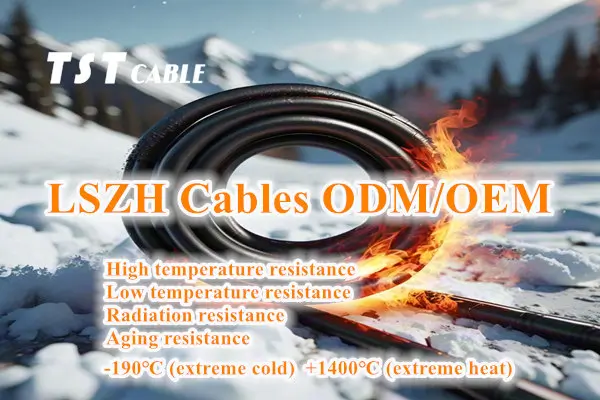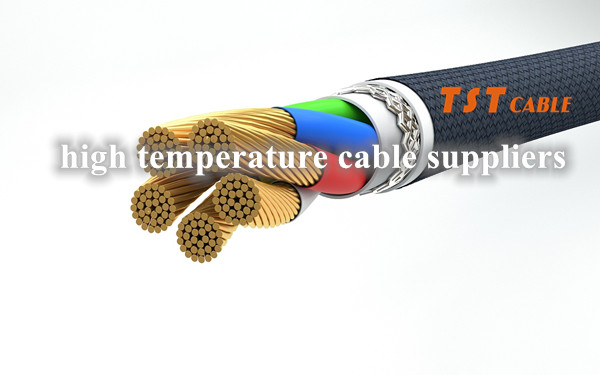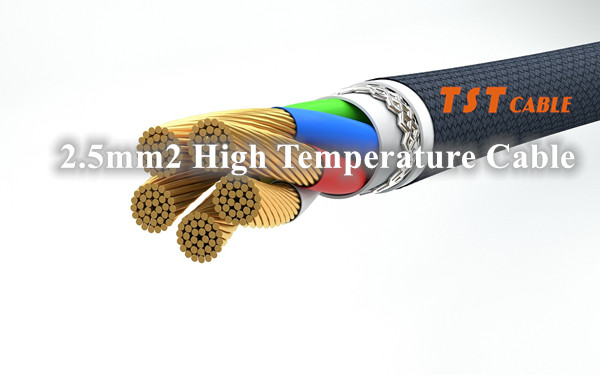
With the popularization of information technology, there are a large number of communication cables in use or waste not used in the building, once a fire occurs in the building, these cables release heat and toxic gases will become a major safety hazard.
Throughout the last few years, several large-scale fire accidents in China, many of which are due to the victims can not escape, cable combustion exudes toxic acidic gases, coupled with combustion releases a large amount of heat, smoke, resulting in respiratory difficulties caused by the victims of the tragedy. Therefore, users in the choice of integrated cabling system, in addition to performance considerations, fire prevention and environmental protection is also a very critical factor. Next, TST CABLES shares how to choose the best material for the cabling solution.
First, cable materials
The cable’s protective sheath is physically divided into two parts: insulation and jacket, whether the cable has a fire function depends mainly on the outermost layer of jacket materials.
Second, the communication cable sheath material
At present, the Chinese market is commonly used materials are divided into three main categories:
- Ordinary (PVC) type cables
At present, most of the domestic cabling cable jacket using PVC (polyvinyl chloride) materials, PVC is in polyethylene (PE) inside the chlorine element to improve the ignition point of the cable, PVC cable has the advantage of lower prices, stable mechanical properties, the disadvantage of low ignition point, the flame spreads quickly, the combustion of toxic fumes and cause low visibility, the combustion of the heat released more.
- Low-smoke halogen-free cables
In order to meet the more stringent environmental norms, low smoke halogen-free (LSZH) cable production process does not use halogen.
When burning, this cable has a very low concentration of toxicity and smoke, which can reduce the emission of toxic gases and corrosion of equipment in the building, thus reducing the casualties caused by fire.
Flame retardant low-smoke halogen-free (LSFRZH/LSFROH) cable is added to the cable sheath of aluminum hydroxide or magnesium hydroxide, once the cable burns, flame retardant effect comes from the water produced during combustion, the burning speed is slower than the PVC, the ignition point of about 150 ℃.
The EU region for the environmental protection of equipment materials used in buildings have very strict requirements, so low smoke halogen-free (LSZH) cable is widely used in Europe.
- Fire-resistant type cables
Fire-resistant type cables generally use PTFE (polytetrafluoroethylene) or FEP (fluorinated ethylene propylene) materials for the jacket, PTFE or FEP is also a highly efficient insulator, the smoke concentration produced when burning is very low, because fluorine has a stronger fire resistance, its ignition point than FRPVC and LSZH is also higher than the ignition point of up to 800 ℃.
When FEP cable burns, it releases hydrogen fluoride which is colorless and odorless, but more toxic than hydrogen chloride.The toxicity of FEP cable is 1.5 times that of PVC cable and 5 times that of halogen-free cable.
Third, the comprehensive cable selection recommendations
As each country’s building construction habits are different from other countries, the choice of integrated wiring cable can not simply copy some of the standards, the need for detailed communication with technical engineers to customize the program.
Fourth, the choice of fire protection or environmental grade cabling
The cable is physically divided into two parts of the protective sheath: insulation and jacket, whether the cable has a fire function depends mainly on the outermost layer of jacket materials.
Comprehensive cabling cable fire or environmental protection level of choice should be based on the actual situation of the site for comprehensive consideration:
- Raised floor or suspended ceiling
Racked floors or suspended ceilings in buildings with PVC trunking / pipe and the installation of air conditioning and ventilation systems, in the raised floors or suspended ceilings in the appropriate use of flame retardant (CMP or OFNP) cable.
If metal trunking/pipe or fire-retardant PVC trunking/pipe is used in the raised floor or suspended ceiling of the building, cables of any fire-retardant rating (CM//CMR/CMP or OFN/OFNR/OFNP) may be used.
For buildings with environmental protection needs, such as: crowded occasions (airports, subways, stations, hospitals, convention and exhibition centers, etc.), the design of integrated wiring project is appropriate to use cables that meet the LSZH grade, and at the same time should be used in the fire prevention function of the metal trunking/pipe or fire-retardant PVC trunking/pipe.
- Vertical shafts
If the vertical shaft of the building is PVC trunking (wire pipe), the vertical shaft should be used in the vertical level (CMR or OFNR) or higher level of cable or fiber optic cable; vertical shaft if the vertical shaft is metal trunking/pipe (or fire-retardant PVC trunking/pipe), the vertical shaft can be used for any fire level (CM/CMR/CMPOFN /OFNR/OFNP) cables.
In summary, green has become a consensus, in addition to considering the electrical performance in the construction of integrated wiring, but also should consider the long-term return on investment, such as fire prevention or environmental protection. Low smoke halogen free cables are becoming more and more popular due to their higher performance price and greener environment.
So how do you choose the best material for your application?
Often, due to different industry requirements and application scenarios, there is no single answer that directly indicates which material is best. Your choice of which cable to use should be based on actual requirements and site characteristics. However, a suitable partner can provide expertise and strong support in the process, helping you to make the right decision and choice with fewer detours. Welcome to send an email to consult TST CABLES experienced high temperature cable technology team, we will provide you with one-on-one personalized and customized consulting services, to help you find the most suitable cabling solutions to meet your actual needs.
Also available in:
English





